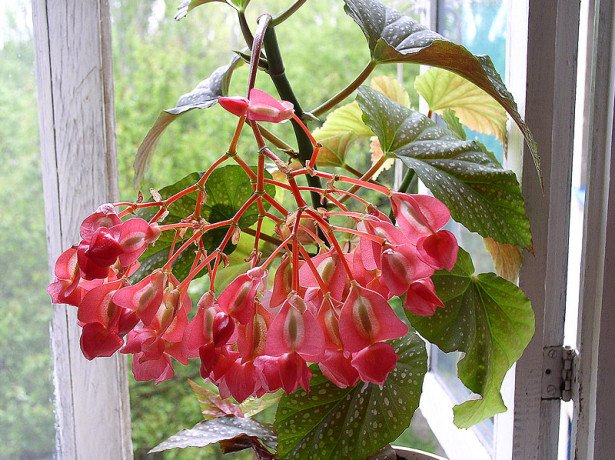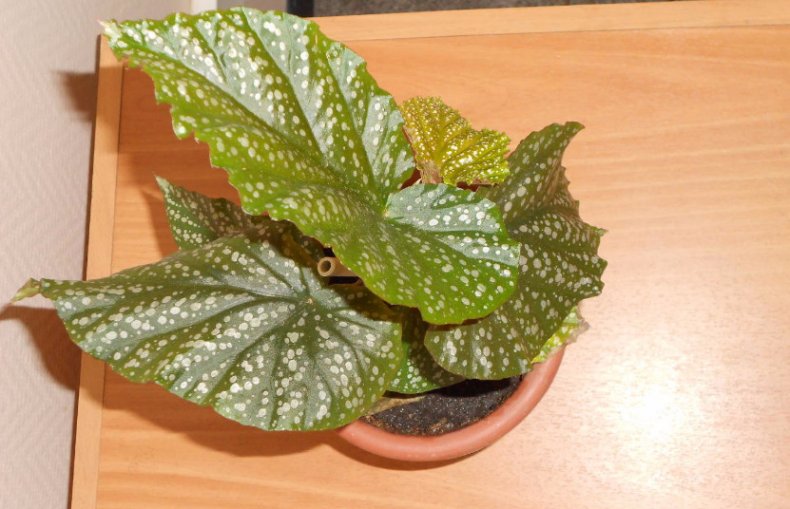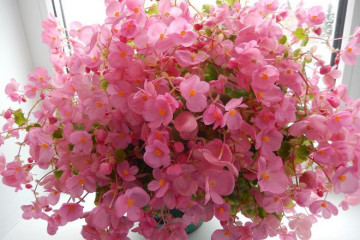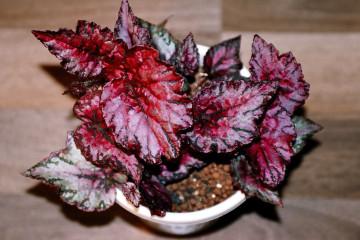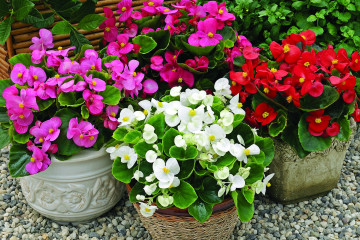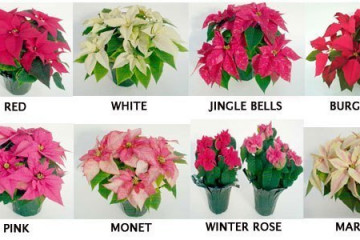Coral begonia flower at home
Content:
The Begoniev family includes more than a thousand different species and varieties. Of all the variety, flower growers fell in love with coral begonia, which is popular not only because of its bright, attractive appearance, but also because of its ease of care.
Description of the plant coral begonia (Begonia Corallina)
This variety is upright growing. Its maximum height at home is 1 m, diameter is 0.5 m. Coral begonia can also grow in the garden, then it stretches up to 2.5 m in height.
The stalk is glabrous, the leaves of an oval cut shape are elongated in length, light silvery specks are scattered on a green background. In summer, the lower part of the leaf turns red. Thanks to the foliage, begonia has decorative properties not only during flowering, but all year round.
The inflorescences of the plant are large, have a red-coral shade, the flowering period falls in the spring, however, observing all the growing conditions, you can achieve year-round opening of the buds. Inflorescences hang from the branches in clusters.
How to provide proper care at home
Coral begonia is one of those decorative foliage plants that require a minimum of self-care. It is enough to create the necessary growing conditions, after which no special measures are required.
Soil selection and feeding
The flower loves a nutritious, porous soil into which moisture will easily be absorbed. Begonia will also respond well to universal soil, soil for indoor or flowering plants, a mixture for violets is ideal.
The bottom of the pot is equipped with holes, it is also important not to forget about the drainage layer. The soil should not contribute to stagnation of water, as this can lead to decay of the root system and negatively affect the flowering process.
The plant is actively fed in the spring-summer period, liquid fertilizers are applied every 2 weeks. In winter, the soil is fertilized every 1-1.5 months. The flower reacts positively to solutions with a high potassium content.
How to plant in a pot correctly
The plant is transplanted in spring or summer. If the flower was purchased earlier, then the necessary conditions are provided for it at any time. The pot is chosen in such a size that there is not a lot of unused land left, as this is fraught with the formation of putrefactive processes. The transfer is carried out by the transshipment method.
Rules for watering and maintaining humidity
Begonia loves moderate watering, therefore, waterlogging and drought will be unacceptable for him. If this does not affect the beauty of the leaves, then for flowering, violation of the watering regime is fraught with negative consequences. Watering is carried out as the top layer of the soil dries up. During the flowering period, begonia is watered more often, the soil should be constantly moist.
The flower loves moist air, but direct spraying will ruin the beauty of the leaves. If the air in the room is dry and there is no humidifier, a container of water can be placed on the windowsill.
Temperature and lighting
Coral begonia loves light, but the scorching sun can burn its leaves. For cultivation, a window sill is suitable from any side, except for the south.
The optimum air temperature for growing is from 14 ° C to 24 ° C. In summer, flower pots can be taken out to the balcony or loggia, to the garden area, but it is worth protecting the shoots and inflorescences from burns. Sheer tulle, canopy, etc. can be used, the plant tolerates shade more easily than bright sun.
Pruning
Pruning is not a prerequisite for begonias to exist. The procedure is necessary not so much for plant rejuvenation as for the formation of a bush. To make the plant grow in breadth, and not up, pinch the upper shoots.
The shoot is cut after about the third internode, it is possible further, if the shape and size of the bush requires it. The first pruning is carried out when the bush reaches a height of 12 cm.
After the begonia has faded, the drying brushes are also cut off. This is necessary so that nutrients are not wasted.
Pruning rules:
- use a clean, sharp knife;
- thick shoots are not cut off, but only shortened;
- after pruning it is worth actively caring for the plant: fertilize, provide moisture and a stable temperature regime.
How and under what conditions it blooms
If the plant does not hurt, it will bloom in spring. The flower stalks not only look beautiful, but also emit a pleasant aroma.
Coral begonia is an unpretentious plant, if you choose the right place for growing, ensure the optimal air temperature and fertilize on time, then inflorescences can appear all year round.
Why might begonia not bloom? Nutritional deficiencies are often the cause.
Recommendations for breeding at home
At home, begonia is more convenient and quickest to propagate by cuttings. The manipulation can be carried out at any time of the year, except for winter. Shoots are broken off and placed in a vessel with purified water or wet sand. After a few days, the roots will appear, after which the sprout can be transplanted into the ground.
For better growth, greenhouse conditions are created for the sprout, that is, they are covered with a film or glass (jar), watered when the top layer of the soil dries up.
Another easy way to propagate begonia is by dividing the rhizome. The manipulation is carried out during the transplant. Thus, you can get two from one plant.
Coral begonia is an amazingly beautiful flower that will delight the eye of even the laziest grower. A bright room and warm air are all that a plant needs for a full life.

